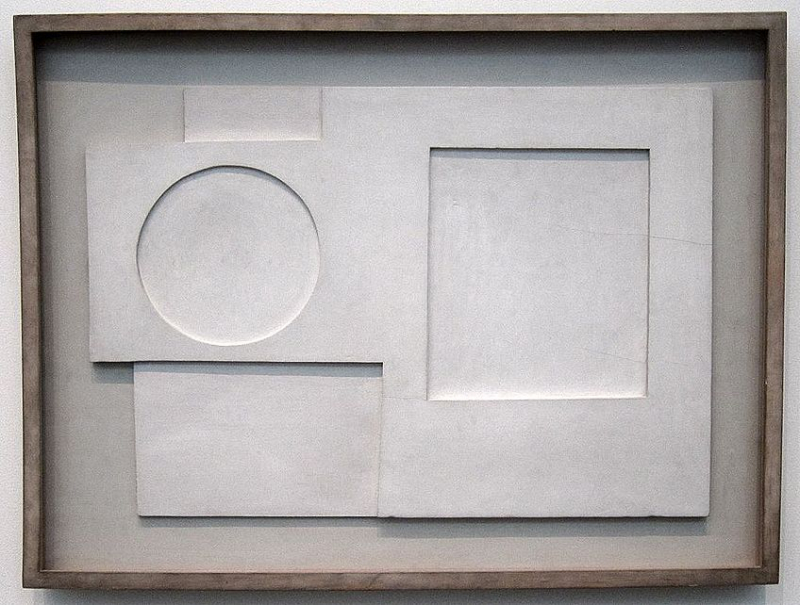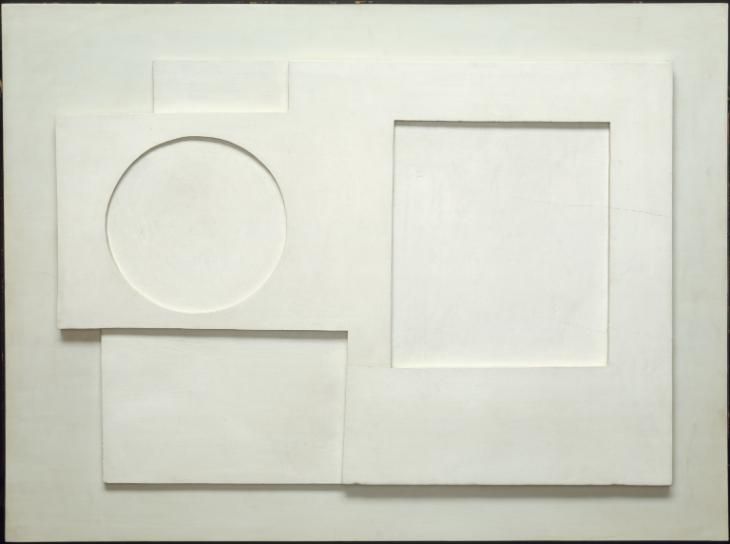1934 (relief)
Ben Nicholson, a British artist, was another well-known figure during the Abstract Art movement. The works of Nicholson, who only created abstract compositions, landscapes, and still lifes, have been cited as important examples of Abstract Art. Nicholson's 1934 (relief) artwork is one of his works of art from that year.
Nicholson was fascinated by the idea that paintings could be able to depict space and was greatly influenced by the Post-Impressionist and Cubist movements. He started to stray from his customarily representational technique in order to experiment and create what he thought to be abstract reliefs. Nicholson handcrafted each component of these geometrically and abstractly sculpted works of art before coating them in white.
Nicholson was highly impressed by Piet Mondrian's artwork in 1934 (relief) after meeting him and his fellow painters Joan Miró and Alexander Calder. Nicholson avoided using color in this abstract painting by sticking with the color white. The wide abstraction and lack of color in 1934 (relief), which was created in the years before World War Two started, served as a subtle investigation of the difficult time experienced between the two wars.
Nicholson illustrated the concept of "lacking" in the society of the time by cutting out a circle and a square from a wooden board. Through the use of geometric forms, layered layering, and a monochromatic color scheme, 1934 (relief) eliminates all feelings.
Nicholson went on to produce a number of these abstract white sculptural reliefs in this distinctive style, cementing his position as one of the most significant characters in English Abstraction at the time.
Artist: Ben Nicholson (1894 – 1982)
Date Painted: 1934
Medium: Oil paint on mahogany
Dimensions: 71.8 cm x 96.5 cm
Where It Is Currently Housed: Tate Modern, England












